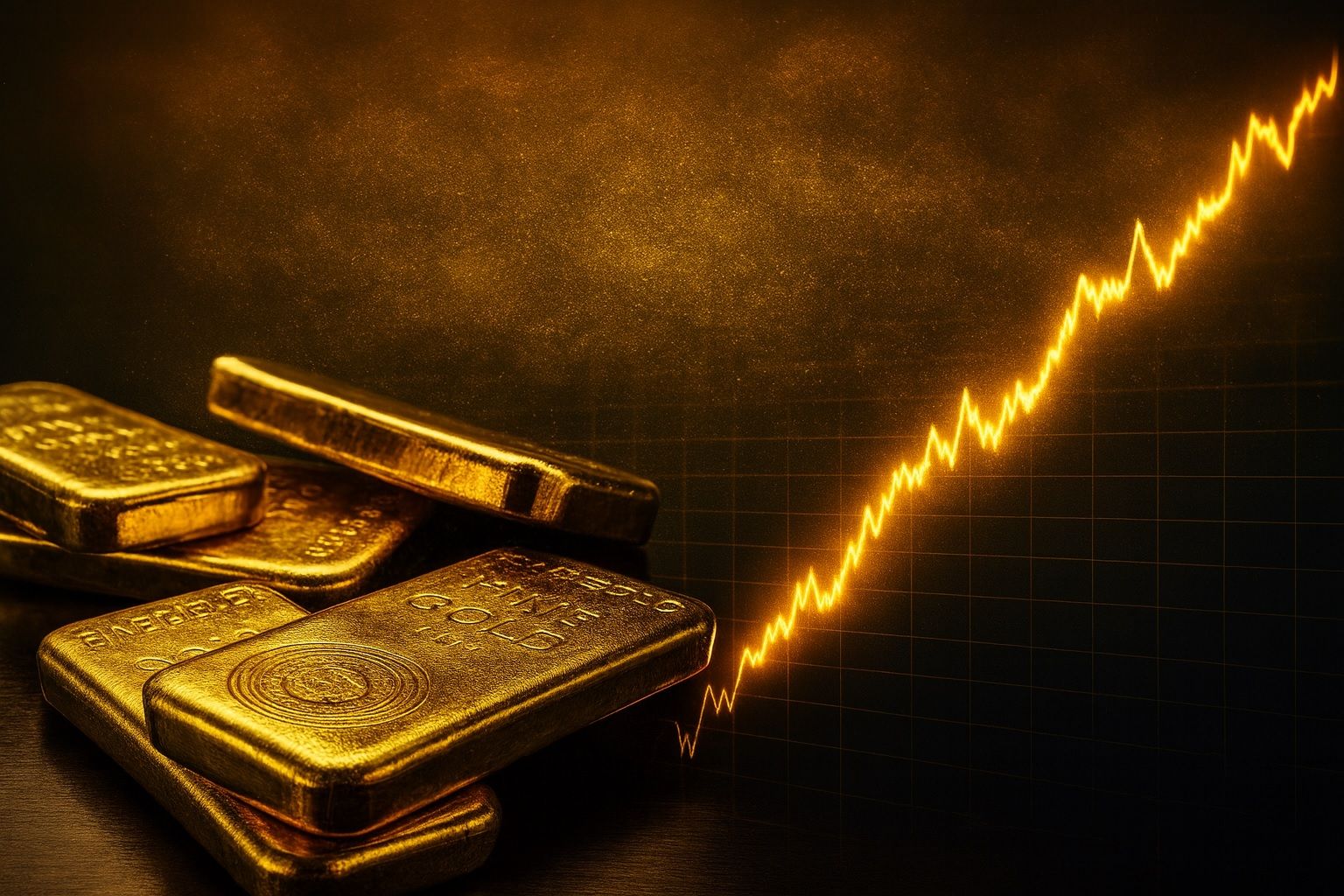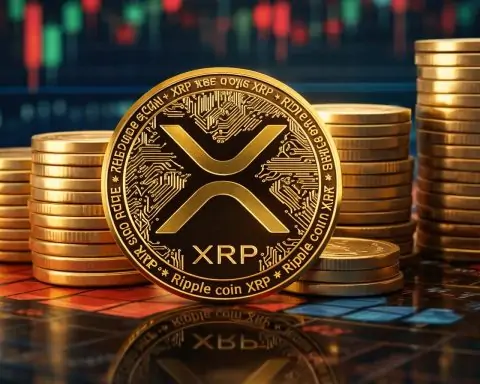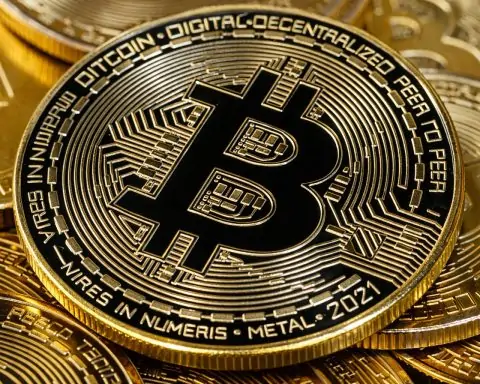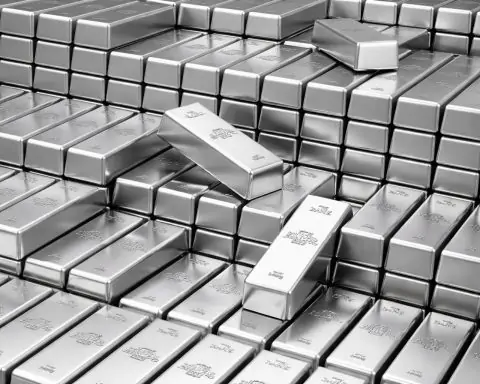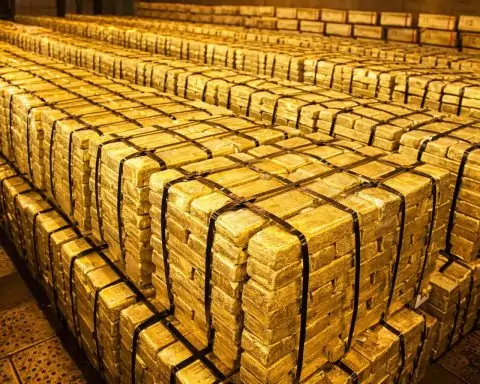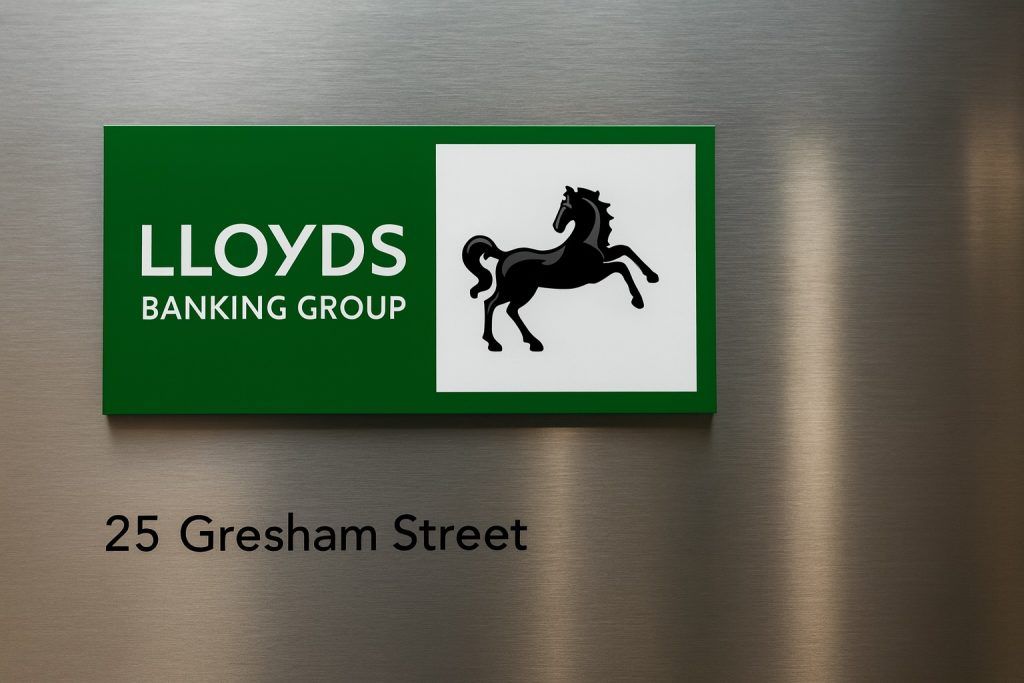- Record Plunge: On Oct. 21, 2025 gold suffered its steepest one-day drop in 12 years (~6% down) [1] [2], wiping out much of its recent gains.
- Prior Rally: The crash came after an extraordinary 2025 rally – gold had surged roughly 55–60% year-to-date [3] [4], repeatedly hitting all-time highs (briefly topping ~$4,381 on Oct. 20).
- Current Price: As of Oct. 24, spot gold was trading around $4,086/oz (≈ €3,517) [5] [6], off recent peaks. Even after this drop, gold is still up ~57% for the year [7].
- Sell-off Drivers: Analysts attribute the fall to profit-taking by traders, a suddenly strong U.S. dollar, and easing safe-haven pressures (e.g. fading US–China trade war fears) [8] [9].
- Precious Metals: Other precious metals fell too – silver plunged about 7–9% on Oct. 21–22 [10] [11], and platinum/palladium also declined as investors rotated out of “risk-off” assets.
- Outlook: Many experts call this a healthy correction, not the end of the rally. Goldman Sachs remains bullish – projecting ~$4,900/oz by end-2026 [12] – and Citi Research still targets ~$4,000 in the near term [13].
Gold’s 2025 Rally Ends in a Jolt
Gold was on fire in 2025, driven by inflation fears, wars and uncertainty. Investors piled into the metal as a safe haven – price rose from about $2,650 in Jan 2025 to a peak near $4,381 by Oct. 20. As Reuters notes, gold “notched multiple record highs and gained 57% this year, bolstered by geopolitical tensions, economic uncertainty, expectations of U.S. rate cuts and strong inflows into ETFs” [14]. TS2.tech reports that central banks hoarded gold at record pace and ETF inflows hit historic levels – roughly $64 billion year-to-date by September [15]. In India’s Diwali season and even New York’s Diamond District, retail investors frantically bought gold, paying decade-high premiums [16].
All that changed on Oct. 21. Spot gold plunged about 6% in one day, its worst drop since mid-2013 [17] [18]. Prices slid from the low $4,300s to roughly $4,120 on that Tuesday [19]. Silver tumbled even harder (–8% on Tuesday) [20]. Gold futures then fell further the next day – Dec. 2025 futures closed near $4,065 – signaling a deep pause in the rally [21] [22].
Why Gold Gave Back Gains: Profit-Taking and a Strong Dollar
The sell-off was widely blamed on profit-taking by short-term traders who had chased gold’s rapid rise. As a market analyst observed, money managers “rushed to lock in profits after the massive rally” [23]. High Ridge Futures’ David Meger agreed: “Given the aggressive move to the upside… it’s not completely surprising to see a bit of profit taking” ahead of key U.S. inflation data [24]. In other words, some investors simply cashed in the spectacular gains. Goldilocks Research’s Gautam Shah echoed this view: “Aggressive profit booking is expected in gold and silver,” he noted, as traders lock in paper gains [25].
The sudden swing in the U.S. dollar also hit gold. Since gold is priced in dollars, a stronger greenback makes bullion more expensive for foreign buyers. On Oct. 21–23 the dollar index jumped (hit multi-week highs) [26], which in turn pushed gold lower. As CBS News reported, “the dollar went up on the day of the decline… making gold more expensive for international buyers” [27]. In Reuters’ phrasing, a resurgent dollar “dried up some safe-haven demand for gold,” especially after reports of a forthcoming U.S.–China summit boosted risk appetite [28].
Meanwhile, signs of easing global tensions took away some of gold’s crisis premium. News of a possible Trump–Xi meeting (scheduled for late Oct) raised hopes of a U.S.–China trade deal, reducing tail-risk hedging. In India, strong post-Diwali buying also wound down. All of these factors combined to cool the fervent demand that had driven gold skyward.
Other Metals and Markets React
The gold drop dragged other precious metals down as well. Silver, which had jumped alongside gold, fell roughly 7–9% over Oct. 21–22 [29] [30], reaching about $48/oz. Platinum and palladium also slid on the week [31]. Even gold mining stocks saw steep losses: for example, the VanEck Gold Miners ETF (GDX) tumbled ~9.4% on Oct. 21 [32], and major producers like Newmont dropped ~9%.
The burst in the “gold bubble” momentarily boosted stock and risk markets. The MSCI World stock index and S&P 500 briefly rallied on the gold sell-off, as capital rotated back into equities. Commodity markets generally saw a shakeout. However, analysts caution these moves may reverse if broader worries resurface.
Analysts Speak Out: A Healthy Correction?
Most market experts view the crash as a correction, not a signal that the gold bull market is over. Many say fundamentals (inflation, de-dollarization, political risk) remain gold-friendly. Goldman Sachs’ team (Lina Thomas & Daan Struyven) emphasizes that “big money is likely not backing down”. They remain “structurally bullish” on gold [33], pointing out that sovereign wealth funds, pensions and other long-term investors plan to add more gold as a portfolio hedge [34]. Goldman kept a $4,900/oz year-end-2026 forecast [35]. Saxo Bank’s Ole Hansen likewise maintains a positive stance: after calling the recent slide “much-needed”, he said the rally’s core drivers haven’t changed and gold remains supported into 2026 [36].
Citi Research (via Investopedia) even noted that some uncertainty easing – such as a U.S.–China deal or the end of the U.S. government shutdown – “can contribute to a consolidation” of gold prices [37]. Citi still targets about $4,000 in the 0–3 month term [38], seeing this drop as healthy digestion of gains. In line with that, many analysts are forecasting a sideways consolidation around $4,000–4,200 in the near term [39] [40]. TS2.tech similarly observed that after this profit-taking, traders will likely pause and reassess, with big banks still eyeing multi-thousand levels given ongoing central bank buying and inflation concerns [41] [42].
Bottom line: while the gold market is clearly volatile right now, longer-term momentum is intact. Dow Jones data (via ET) show that after past 5%+ drops, gold has typically rebounded a month later on average [43]. Citi, Goldman, and others still see higher prices ahead if inflation stays above target and central banks keep diversifying reserves. If U.S. CPI (due Oct. 24) comes in tame, that could keep Fed cuts on track and potentially stabilize gold [44]. A surprise spike in inflation, however, could give the dollar another leg up and weigh on bullion.
In short, the recent gold crash has shaken nerves, but analysts generally call it a pause rather than the end of the rally [45] [46]. For now, investors are watching a key support zone around $4,000–$4,100 closely – a breach below could spark further falls toward ~$3,800 [47], while a hold might set the stage for a rebound. As always with gold, geopolitical flashpoints or policy shifts could quickly change the picture.
Sources: Latest market data and expert analysis from Reuters [48] [49], CBS News [50] [51], Economic Times/Investopedia [52] [53], TS2.tech [54] [55], and other financial news outlets. All figures (e.g. $4,086/oz, €3,517/oz on Oct 24, 2025) are drawn from current market reports [56] [57].
References
1. www.cbsnews.com, 2. www.investopedia.com, 3. ts2.tech, 4. www.investopedia.com, 5. www.reuters.com, 6. www.goldpreis.de, 7. www.investopedia.com, 8. ts2.tech, 9. www.cbsnews.com, 10. www.cbsnews.com, 11. www.reuters.com, 12. markets.businessinsider.com, 13. www.investopedia.com, 14. www.reuters.com, 15. ts2.tech, 16. ts2.tech, 17. www.cbsnews.com, 18. www.investopedia.com, 19. www.investopedia.com, 20. www.investopedia.com, 21. economictimes.indiatimes.com, 22. www.reuters.com, 23. economictimes.indiatimes.com, 24. www.reuters.com, 25. ts2.tech, 26. www.reuters.com, 27. www.cbsnews.com, 28. www.reuters.com, 29. www.cbsnews.com, 30. www.reuters.com, 31. www.reuters.com, 32. www.investopedia.com, 33. markets.businessinsider.com, 34. markets.businessinsider.com, 35. markets.businessinsider.com, 36. www.reuters.com, 37. www.investopedia.com, 38. www.investopedia.com, 39. economictimes.indiatimes.com, 40. www.investopedia.com, 41. ts2.tech, 42. www.reuters.com, 43. economictimes.indiatimes.com, 44. www.reuters.com, 45. economictimes.indiatimes.com, 46. markets.businessinsider.com, 47. economictimes.indiatimes.com, 48. www.reuters.com, 49. www.reuters.com, 50. www.cbsnews.com, 51. www.cbsnews.com, 52. economictimes.indiatimes.com, 53. www.investopedia.com, 54. ts2.tech, 55. ts2.tech, 56. www.goldpreis.de, 57. www.reuters.com
